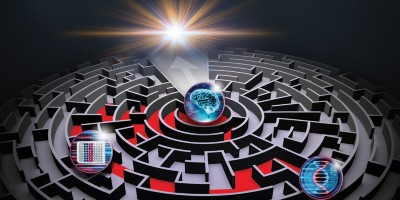Glutamate receptors are thought to play an essential role in the central nervous system damage that results from certain neurological insults. A recent report indicates that immunization against a glutamate receptor subunit may have neuroprotective effects, but we must consider the potential for pathogenic autoimmune responses.

References
During, M.J. et al. An oral vaccine against NMDAR1 with efficacy in experimental stroke and epilepsy. Science 287, 1453–1460 (2000).
Steinman, L. Multiple approaches to multiple sclerosis. Nature Med 6, 15–16 (2000).
Dirnagl, U., Iadecola, C. & Moskowitz, M.A. Pathobiology of ischaemic stroke: an integrated view. Trends Neurosci. 22, 391–397 (1999).
Dunah, A.W. et al. Biochemical studies of the structure and function of the N-methyl-D-aspartate subtype of glutamate receptors. Mol. Neurobiol. 19, 151–179 (1999).
Gegelashvili, G. & Schousboe, A. High affinity glutamate transporters: regulation of expression and activity. Mol. Pharmacol. 52, 6–15 (1997).
Faria, A.M. & Weiner, H.L. Oral tolerance: mechanisms and therapeutic applications. Adv. Immunol. 73, 153–264 (1999).
Kaiserlian, D. & Etchart, N. Entry sites for oral vaccines and drugs: A role for M cells, enterocytes and dendritic cells? Semin. Immunol. 11, 217–224 (1999).
Medawar, P. Immunity to homologous grafted skin III. The fate of skin homografts transplanted to the brain, subcutaneous tissue and to the anterior chamber of the eye. Br. J. Exp. Path. 29, 58–69 (1948).
Albert, M.L. et al. Tumor-specific killer cells in paraneoplastic cerebellar degeneration. Nature Med. 4, 1321–1324 (1998).
Whitney, K.D. & McNamara, J.O. Autoimmunity and neurological disease: antibody modulation of synaptic transmission. Annu. Rev. Neurosci. 22, 175–195 (1999).
Brann, D.W. Glutamate: a major excitatory transmitter in neuroendocrine regulation. Neuroendocrinology 61, 213–225 (1995).
Author information
Authors and Affiliations
Rights and permissions
About this article
Cite this article
Wood, M., Vincent, A. Neuroprotective autoimmunity—a double-edged sword?. Nat Med 6, 383–385 (2000). https://doi.org/10.1038/74641
Issue Date:
DOI: https://doi.org/10.1038/74641
- Springer Nature America, Inc.


